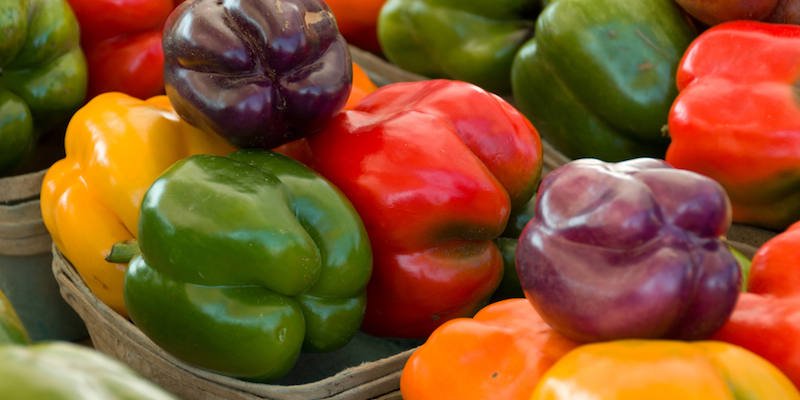Spotlight on Capsicum
Have them fresh as a crunchy, sweet and healthy snack or atop a salad; or take advantage of their tangy taste and the aesthetic value they bring to a dish – available in a wide array of colours including green, red, yellow, orange, purple and even black…whichever way you enjoy them, capsicums are a great addition to a healthy, balanced diet. In this post, shine a spotlight on Capsicum and take a closer look at some of the health benefits.
Nutritional Profile
- While they may look similar to chilli, they aren’t spicy. They only contain small amounts of capsaicin which lend to the ‘hotness’ that chilli is known for.
- They are rich in Vitamin C and also contain Vitamin B1, B2, B3 & B6, Vitamin A, Folate, Molybdenum, Vitamin E, Fibre, Pantothenic acid, Potassium, Vitamin K, Manganese, Phosphorous and Magnesium.
Healthy Snapshot
- Anti-inflammatory – the phytochemicals found in capsicum are shown to produce an anti-inflammatory response that proves to alleviate peripheral neurogenic pain such as related to Crohn’s disease (an inflammatory disease of the bowel) or cutaneous pain of the skin.
- Mucilage – It works as a mucilage when ingested by increasing the production of gastric mucus. Capsicum contains tannins which are astringent and often considered for their benefits when treating gastrointestinal disorders that produce diarrhoea such as dysentery and other microbial disorders.
- Cardiovascular – Capsicum has both warming and vasodilative flavonoids, allowing for improved blood flow resulting in better oxygenation of organ tissues. It is suggested that these flavonoids are beneficial in preventing coronary heart disease.
- Immune boosting – Capsicum is rich in Vitamin C. Vitamin C is vital for maintaining a healthy immune system and for building strong collagen to support skin and joints.
- Strong bones – being rich in Vitamin K, capsicum also helps develop strong bones and protection of cells from oxidative damage.
Selection and Storage
- They are available all throughout the year.
- Choose capsicum that has deep vivid colours, taut skin, and that are free of soft spots, blemishes and darkened areas. Their stems should be green and fresh looking. They should also be heavy for their size (reflecting their thick, well-formed and well-hydrated walls) and feel firm enough so that they will only yield slightly to a small amount of pressure. The shape of the capsicum doesn’t generally affect the quality, although it might not be suitable for certain recipe preparations.
- Avoid those that have signs of decay including injuries to the skin or water-soaked areas.
- You can’t use colour as a primary indicator, as most (but not all) green capsicum turns red over time, but might be ripe before changing from green to red (there are also some varieties which never start out green). A good rule of thumb is to judge not by the colour itself but by the colour quality and overall texture and feel.
- Unwashed capsicum stored in the vegetable compartment of a fridge can keep for approx. 7-10 days. As capsicum need to stay well hydrated and are very sensitive to moisture loss, make sure to include a damp cloth or paper towel as well when storing them in the fridge to help retain their moisture.
- Don’t cut out the stem before storing. Capsicum is especially sensitive to moisture loss through the stem (calyx) portion and more susceptible to chilling injury when the stem is removed.
